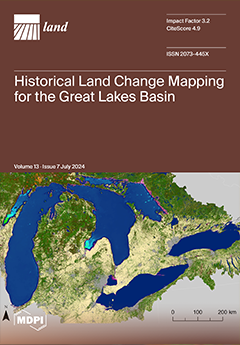To prevent the degradation of light-textured soils, it is advisable to use them for grasslands. These soil management systems help with the faster accumulation of soil organic carbon (SOC), thereby improving the soil’s properties and reducing carbon emissions from agricultural land. In this
[...] Read more.
To prevent the degradation of light-textured soils, it is advisable to use them for grasslands. These soil management systems help with the faster accumulation of soil organic carbon (SOC), thereby improving the soil’s properties and reducing carbon emissions from agricultural land. In this experiment, we studied the distribution of multi-component perennial grass roots in the
Arenosol profile and their impact on SOC sequestration in temperate climate zones. Our research aimed to identify differences in root biomass at depths of 0–15 cm, 15–30 cm, and 30–50 cm and to assess their correlation with SOC and dissolved organic carbon (DOC) in the soil. The roots, shoots, and soil samples of fertilized and unfertilized grasslands were collected at the flowering stage and after the final grass harvest two years in a row. Our findings revealed that, in sandy loam
Arenosol rich in stones, 12.4–15.9 Mg ha
−1 of root biomass was accumulated at 0–50 cm of soil depth. The application of NPK fertilizers did not significantly affect grass root biomass, but significantly affected shoot biomass. Most roots (84–88%) were concentrated in the 0–15 cm layer. On average, 5.10–6.62 Mg ha
−1 of organic carbon (OC) was stored in the roots of perennial grasses within 0–50 cm of soil depth. We found that the SOC content in the 0–50 cm soil layer correlated more strongly (r = 0.62,
p < 0.001) with C accumulated in the roots of the corresponding layer than with shoot biomass (r = 0.41,
p = 0.04). However, a significant correlation was found between DOC and shoot biomass (r = 0.68,
p < 0.001) and between DOC and the biomass of residues (r = 0.71,
p < 0.001), explaining the significant increase in DOC in the 30–50 cm soil layer and indicating the leaching of mobile soil organic matter (SOM) substances from the above-ground biomass using fertilizers.
Full article





